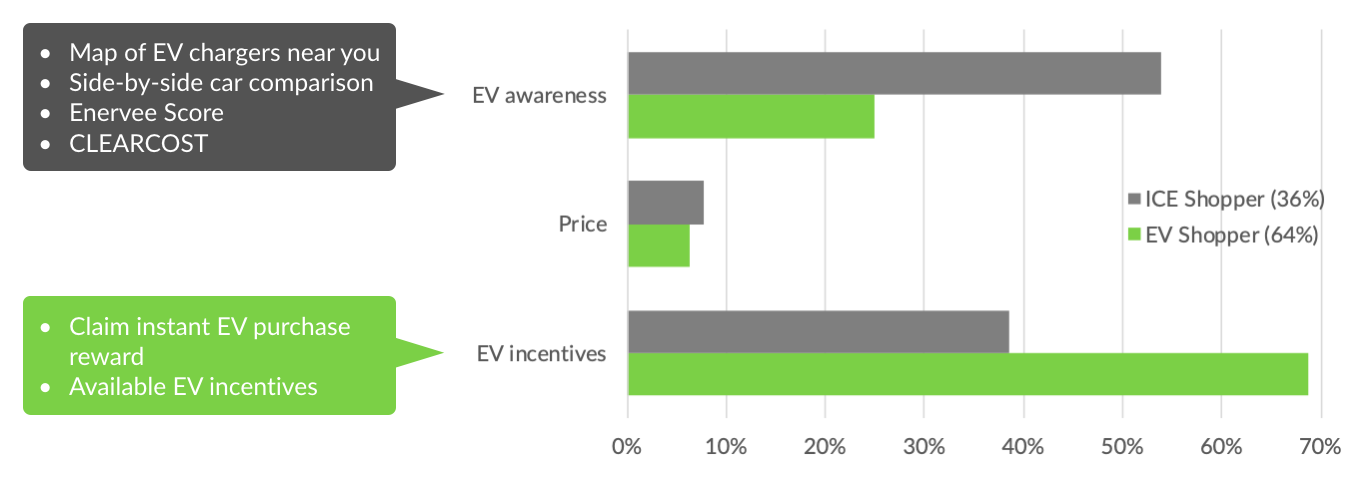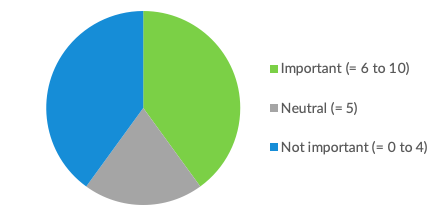People in the business of transportation electrification know that a major barrier to electric vehicle (EV) adoption is the fact that the vast majority of people still don’t know what EVs are. Or, if they do, they think they’re too expensive.
While EV technophiles – the super early adopters – have been buying electric for nearly a decade, their enthusiasm has yet to go viral. Technophiles are special people. They are the one-in-one-hundred consumers that will buy the newest, latest, greatest thing before anyone else.” Regardless.
Strategies for accelerating EV adoption
So how do we change how the rest of us think about, feel about and ultimately buy vehicles, with a view to moving the masses towards EV choices as quickly as possible?
Some common strategies are broad-based EV marketing campaigns, promoting word-of-mouth recommendations from current EV owners/rideshare drivers and getting people to experience EVs first-hand through test drives. Last year, Electrify America launched a $45 million education and public awareness initiative, and there is still a long way to go.
EVs still unfamiliar for the vast majority of car shoppers
According to Veloz, despite such efforts, 50% of Californians still know next to nothing about electric cars – and that’s in a state where the EV market share of new sales exceeded 9% by the end of 2018 and public and workplace charging infrastructure is increasingly visible. This statement is underscored by new research coming out of UC Davis (courtesy of Ken Kurani – thank you, Ken!): The majority of car owners surveyed in March 2019 still couldn’t name a single EV model (59% couldn’t name a plug-in hybrid PHEV model; 55%, a battery electric vehicle BEV). With respect to the BEVs, another 12% said they could name an EV model, but got it wrong.
Even in California, which is home to leading EV carmaker Tesla, only about one-third of car owners can correctly name a single battery EV model – and this share hasn’t increased at all since February 2017.
Once someone buys an EV, they seem to be hooked for life. In our own research on people who applied to receive an EV reward from their utility, 25% of the people who bought an EV were replacing an EV. But the vast majority of car shoppers are not familiar with the technology, let alone actively in the market to buy an EV.
While word-of-mouth and test drives can raise awareness, dispel misconceptions and stimulate the desire to own an EV, consumers still have to make the decision to buy an EV instead of a combustion engine vehicle.
That’s where consumer psychology and behavioral economics come in. The blog to the left presented research showing that an overwhelming 91% of Americans believe it’s important to buy a car that’s inexpensive to operate (low fuel cost) and over 60% think it’s important to buy a car that has zero emissions or is eco-friendly, with another 18% sitting on the fence. Nonetheless, sales figures, web traffic and surveys reveal that the vast majority of car shoppers still aren’t actively shopping for EVs.
Introducing choice engines to the vehicle market
So how can we help someone in the market for an internal combustion engine vehicle – actually shopping for their next car – discover that an EV just might be their next dream car…a car that meets their aspirations for clean vehicles and need for affordable options suited to their specific situation?
At Enervee, we’re confident the answer is choice engines.
Below we present exciting results achieved by Enervee Cars choice engine deployments in New York, which were designed from the ground up to speak to all car shoppers and, in particular, to nudge people in the market for an internal combustion engine (ICE) vehicle towards EV purchases.
Advanced Energy Economy’s Regulatory Plan for America’s Electric Transportation Future underscores the importance of improving market transparency (in terms of the relative operational efficiency and emissions of vehicles across fuel and engine types) and developing data-driven customer engagement programs that leverage behavioral insights to stimulate consumer demand for EVs. According to research cited in AEE’s Regulatory Plan:
“When consumers are armed with a simple and credible way to choose vehicle models that are zero-emission, inexpensive to operate, and do not cost more to purchase, 84% would be likely (45% extremely likely) to opt for an electric over a conventional car model.”
Converting NY car shoppers into EV buyers
Last September, we said “stay tuned” to see if the behavioral research and decision science baked into the design of our consumer-centric, utility-branded online Cars choice engine platform would pan out in practice – and the early results coming out of NY State are indeed encouraging.

When we surveyed people who took advantage of a $100 utility reward for sharing information on EV purchases, we found that a quarter were EV early adopters who bought an EV to replace their existing EV.
The other 75% replaced a combustion engine vehicle with an EV, avoiding 3,890 kg of greenhouse gas emissions annually on average.
But what we’re most excited about is that over one-third of those who actually bought an EV after visiting the UtilityCo Cars site originally planned to buy a conventional internal combustion engine model when they started their car shopping journey.
Compare that conversion rate to the current market share of EV sales in NY of under 2% and you begin to understand the impact that choice engines can have on the vehicle market.
What is also critical for speeding technology adoption is word-of-mouth. And among EV buyers in our target audience of people originally in the market to buy a combustion engine vehicle:
- 100% found the Cars website useful for their EV shopping experience
- 100% were satisfied with the Cars platform (60% extremely satisfied)
- The Net Promoter Score was maxed out at 100, meaning that all internal combustion engine vehicle shoppers who subsequently purchased an EV were extremely likely to recommend the UtilityCo Cars website to a friend, colleague or relative.
We are thrilled with these early results, as they document that our efforts to translate academic research into user-friendly choice engine solutions are delivering the intended outcomes.
In another set of user surveys across several Cars deployments, at least 50% of visitors to UtilityCo Cars said they were more likely to buy an EV as a result of the site, and more than one-third of those who bought vehicles after visiting the site actually followed through and bought electric.
Catering to the differing needs of EV neophytes and EV veterans
The features of the Enervee Cars platform that were most helpful to car shoppers varied by their starting point. Those who were already planning to buy an EV at the outset of their shopping journey and had completed an EV purchase after visiting the UtilityCo Cars site found most value in the ability to claim instant EV purchase rewards offered by their utility through the website (67%), as well as information on available Federal and State EV incentives (56%).

On the other hand, only 40% said the utility EV reward was of any importance in their decision to buy an EV, with an equal number stating the the reward was not important. This level of self-reported free-ridership is consistent with the fact that 64% of those who bought EVs had already decided to buy an EV by the time they learned about the utility EV incentive via the Cars platform.

In addition, compared to the cost of a new vehicle, or to the size of Federal tax credits and State incentives (typically in the thousands of dollars), a utility reward in the hundreds of dollars is unlikely to be a deal-maker (or breaker) in a nascent market. With a market share of less than 2%, the NY vehicle market is still largely driven by the technophile and other early adopters, who want the latest technology. Period. As more program data become available and EV adoption advances along the technology adoption curve, utility EV incentives can be optimized to limit free ridership and improve cost-effectiveness.
Beyond incentives, one-third of EV shoppers found the side-by-side car comparison (with integrated Enervee Score for Cars and CLEARCOST) helpful in facilitating their shopping experience. CLEARCOST makes it easy to compare different car models by their total cost of ownership, taking into account purchase price after available incentives and fuel cost (with other cost elements being added this year).
Focus groups have shown that CLEARCOST is a real eye-opener for environmentally conscious consumers who thought EVs were too expensive for them (see video).
Turning to those who ended up buying an EV, but who went into the shopping journey intending to buy an internal combustion engine vehicle, other features were helpful in facilitating the buying process. Sixty percent found the map of “EV chargers near you” most helpful (compared with only 11% of those already planning to buy an EV), addressing lingering fears about range anxiety.
And the the side-by-side vehicle comparison, combined with CLEARCOST and Enervee Score, helps people compare ICE and EV models on an equal footing. These powerful car comparison shopping features – not available via the plethora of EV-only sites – are critical to winning the hearts and minds of combustion vehicle shoppers.
Not surprisingly, features that helped ICE shoppers discover EV benefits were twice as important as for EV shoppers.
Driving unintended EV purchases
Although still based on small sample sizes, these initial results for NY State suggest that it is indeed possible to speed EV adoption with online choice engines that can move combustion vehicle shoppers to consider EVs as a viable option, develop enthusiasm for their benefits and then actually follow through to an (unintended) EV purchase.
This is no small feat.
A welcome side benefit for utilities that provide this unique and useful service that Americans say they want is that the UtilityCo cars experience leaves 57% of those polled with a more favorable opinion of their utility (with the remainder unchanged).
To summarize, the most effective strategies to move the masses so far are:
- Promoting word-of-mouth. Getting rideshare drivers into EVs has proven to be a clever way to leverage early adopters to speed technology diffusion. Lyft and Uber EV drivers love their EVs and are credible teachers to dozens of riders daily about how fun, convenient and economical the new EV technologies actually are. Word-of-mouth raises awareness and interest.
- Getting people behind the wheel of an EV. Beyond just riding in/learning about EVs from rideshare drivers and technophile/early adopter friends and family, test drives allow people to see for themselves what all of the buzz is about — and why EV buyers never go back. Test drives dispel myths and misinformation. Test drives stimulate desire.
- Empowering car shoppers to choose EVs on their merits, with choice engines. For the foreseeable future, the vast majority of all car buyers will be shopping for a combustion engine vehicle, despite the fact that a majority also aspire to buy clean vehicles that are economical to drive. What they need is a level playing field…a way to compare vehicles across engine & fuel types and choose those that best meet their needs. Choice engines support action, in the form of EV purchases.
We will be following up soon with results from other Enervee Cars deployments. Spoiler: The early results coming out of Ohio are just as compelling…and our home state of California will be next!

